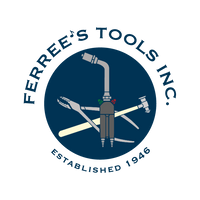Back To Basics-Z61-11/13 Setup
Here are some Pictures to help you Set up the Set-up.







With rod straightened up; mounting the bow on the rod. Everything else is aligned, as the ball is now "indexed" to the Perma-Center. Notice the Z60 is laid over for ease of access. Once the bow is installed and the arm is down, you just bring it back up.
What the Perma-Center is, is the mental idea that the "BALL NEVER MOVES", even though it actually does, with every movement of the linkage arm. It is the imaginary center point that the ball must always be centered with. If you lower the linkage arm angle, the ball moves forward AND down. If you raise the angle of the linkage arm, the ball moves rearward AND UP! You always MUST realign the ball, if you move the rod or ball in any way at all. That is why you SET the arm angle with the lower nut (A) as an index; and later lock it in place with the upper nut (B), [I find finger tight is enough] when you are indexing it or you actually start removing dents with it.
ALIGNMENT: The first step in alignment is to set the curve by adjusting the arm angle to put the ball where you want it to be when in use. You ALIGN using one of the extensions (usually the middle one) which mounts to the adjustable arm with the standard FERREE 5/8" bayonet mount, and the largest Z61-13 aluminum ball you can get in the tube to provide the "profile" or mandrel which you're going to work off of.
Holding the bow up beside the arm/ball assembly, put the ball where you want it and "hold" it there with the lower nut (A). You don't want to "lock" it in place with the upper nut (B) until you've mounted the bow on the rod and started taking out the dents.
Once the curve is set, using the two small nuts as above, you then 'center' the ball. UP and DOWN using an alignment tool or a tapered rod as a gauge mounted in the Z60 and using the large threads under the Mandrel clamp. You set the height by rotating the mandrel clamp, tightening or loosening the large threads and locking them with the large nut (C) when centered.
Remember, if one turn puts you up to far and one turn the other way puts you down too far, you can just take the adjustable rod OUT of the clamp and put it in from the other side. That way you are adjusting to within 1/2 a thread or approximately .040". The new winged Z61-8 setting nut (C) is recommend here because it can be set quickly with a rawhide hammer (F5A or F5B) rather than a wrench. (This nut has been standard equipment for about a year or so, since we came out with this adjustable rod.) Now you have set the height to 'perma-center' the ball.
You set the IN and OUT using the Mandrel clamps' "clamping action". First loosen the bolt that tightens the tension of the clamp (D). Loosen the two 'set' bolts also (E &F). Slide the Z61-11 rod in or out so that the Ball is centered under the roller you are going to use, (Probably the Z60-36) and then cinch it semi-tight.
You set the SIDE to SIDE alignment this way: Rotate the Z60 head with the roller installed around the ball, using it as a gauge. Check to see that the roller is nearly the "same distance" away from the ball all the way around the ball; push the rod right or left to center as necessary. (I use 1/8" to 1/4" as an easy to SEE gauge.) Then, when centered, finish tightening up the cinch nut (D) and snug up the setting bolts (E &F) so that the rod won't rotate while you're pushing sideways on it. (There will be some natural flex in the rod when in use, but make the set up as perfect as possible to start with. Now you've 'perma centered' the ball, all 720 degrees.
Now, just raise up the arm with the ball attached, install the bow on the arm/ball assembly and lower the bow down, while the arm lowers inside the bow, to the preset stop. Then take your fingers and tighten the upper lock nut (B) located in the triangle brace area of the rod. Now, you're ready to roll out the dents.
If you change the angle of the ball, or change ball size you MUST re-index the setup.
Depending on the design and manufacture of the tuba, you may have to use more than one set up to get the job done. For example, some old Martin tubas are very wide and may use the middle and long extension. The old Bessons were very tall and may require using the middle and the short extensions. NOT AT THE SAME TIME. The extensions have threads for using the round balls (N80D,E & Z61-13S's) at one end, and the other end goes on the 5/8" bayonet, which is set with Allen screws.
This may SEEM like a lot of work, but it isn't and it goes pretty quick. Wait till you see HOW IT TURNS OUT! I can't wait until we can adapt this technology for smaller jobs. Be sure to use the Z6 synthetic lubricant mixed with your petroleum jelly.
Ferree's Tools-"Because they work!"
